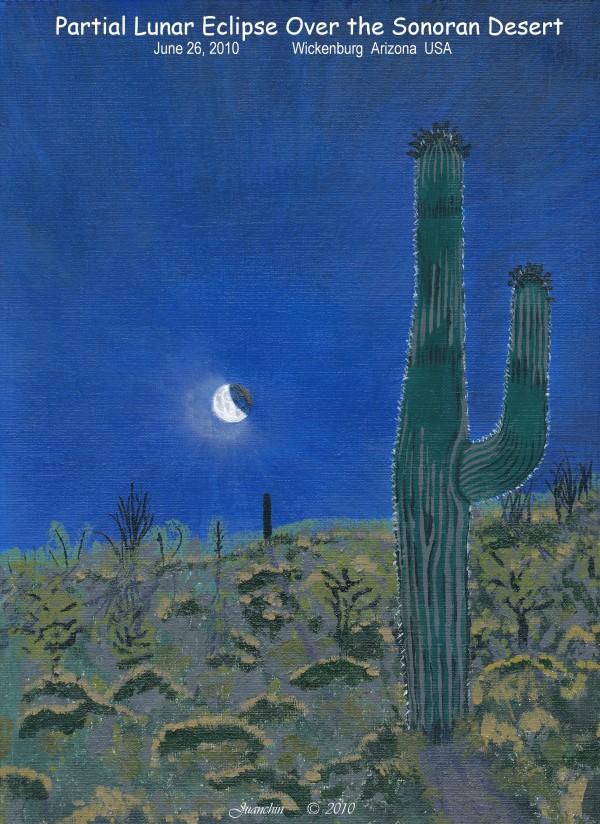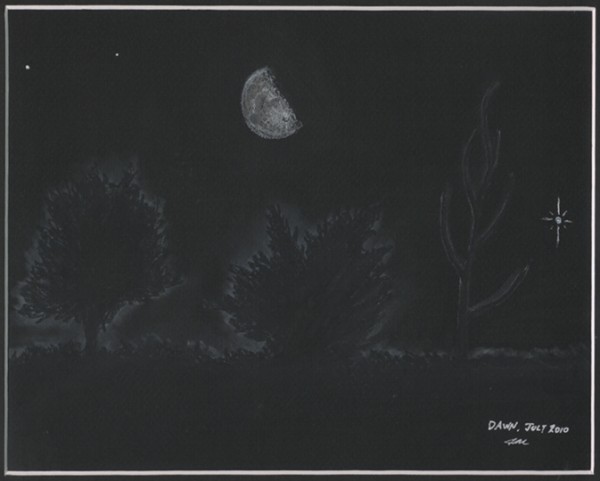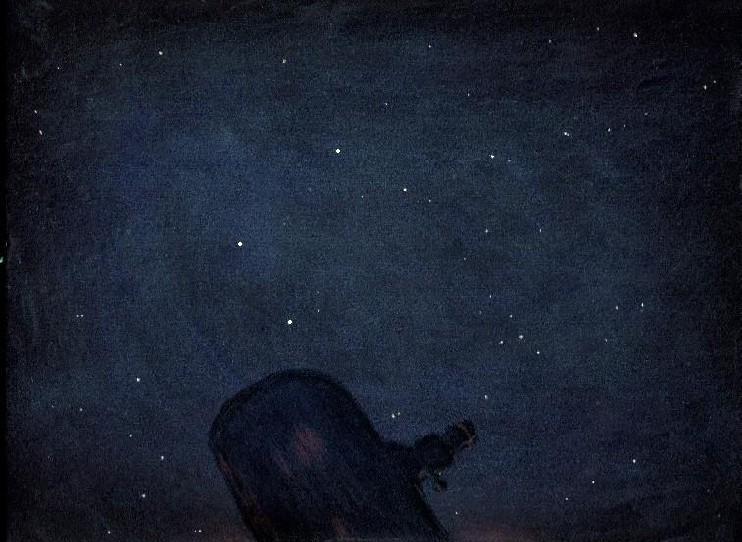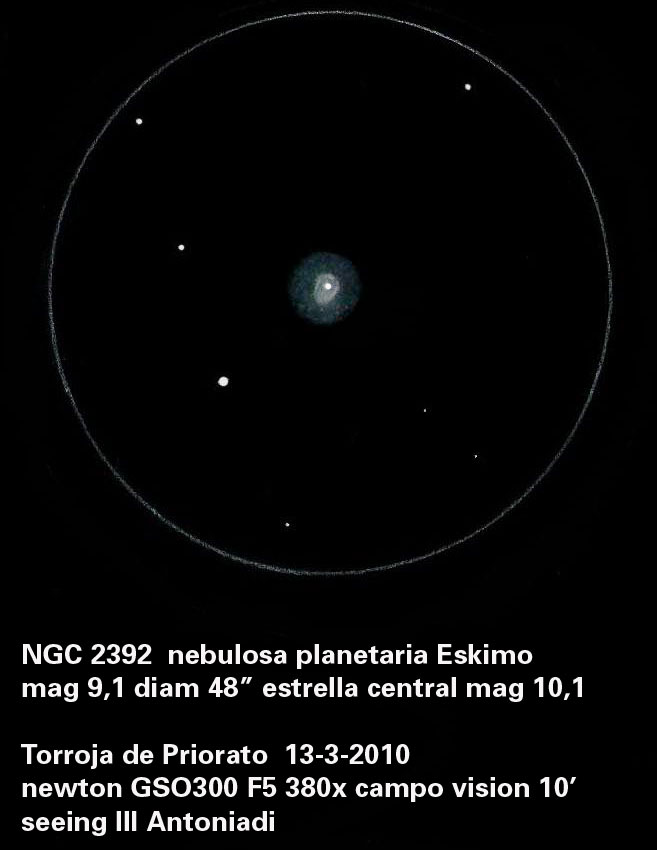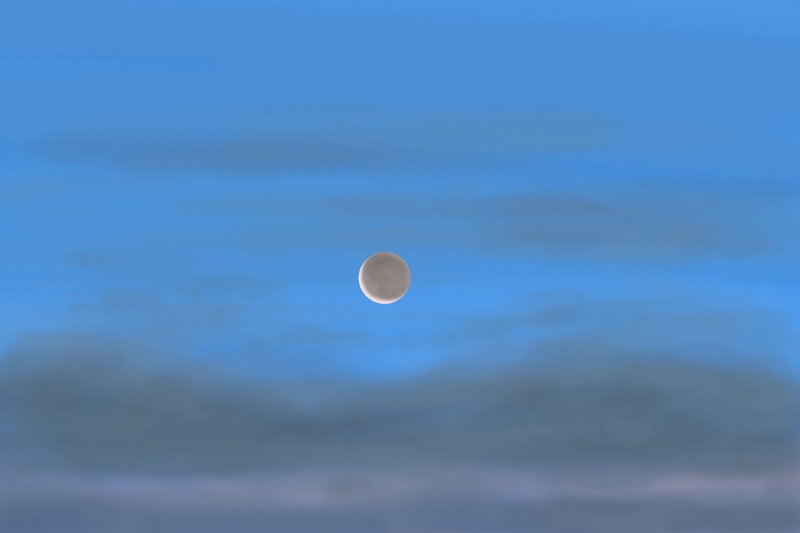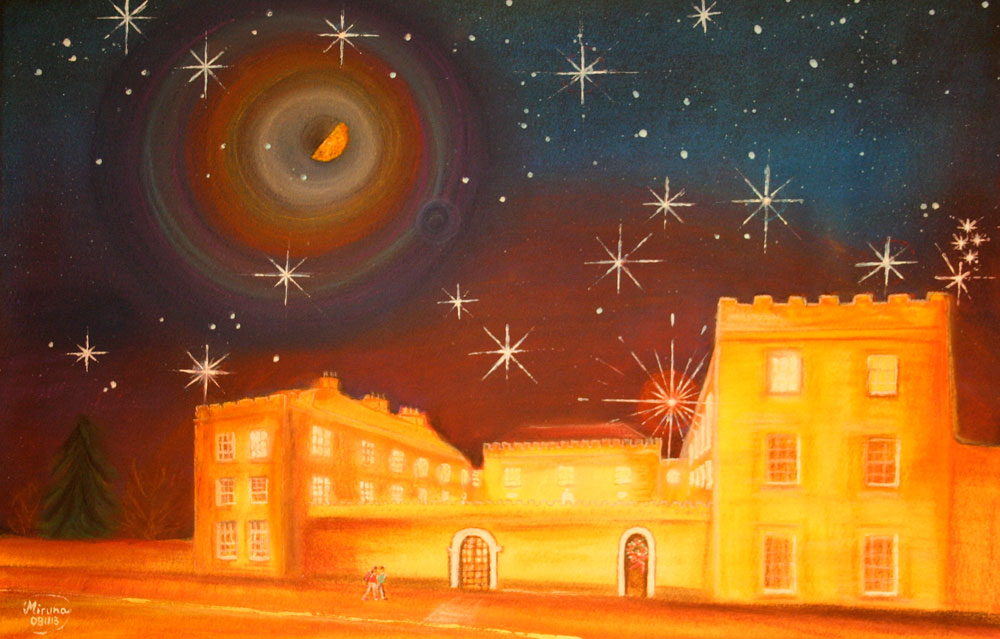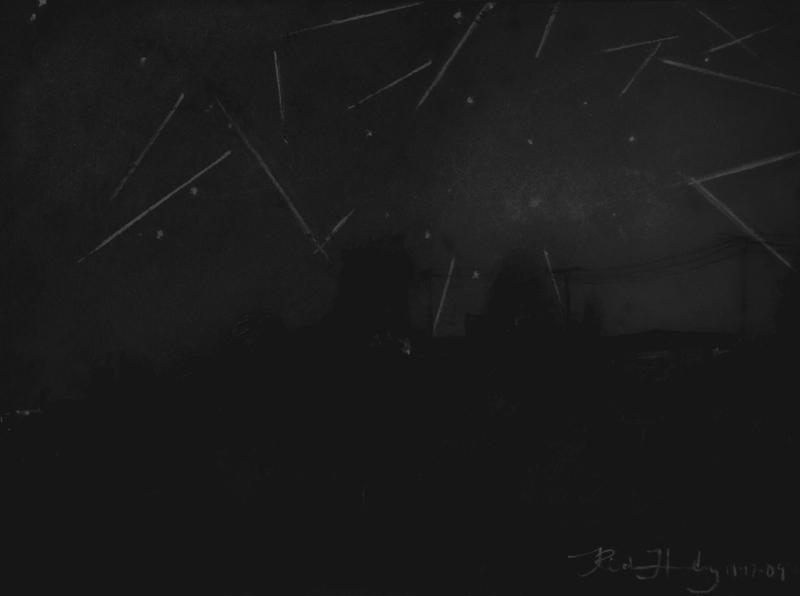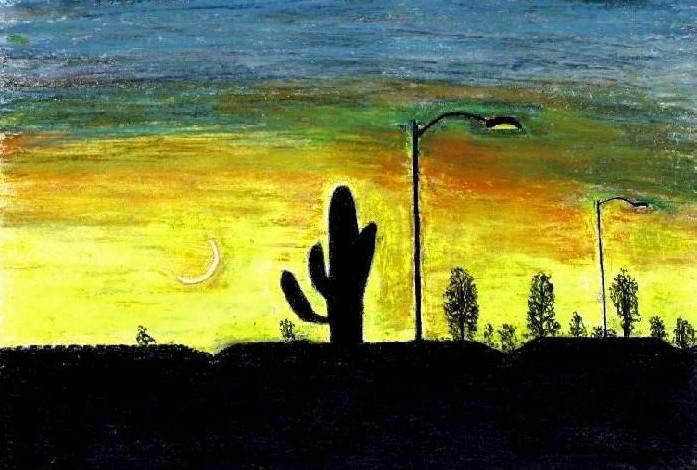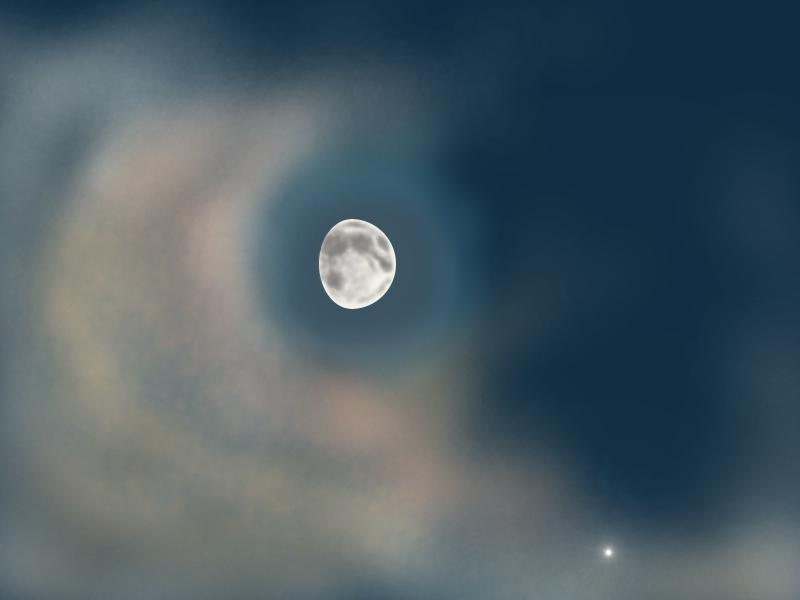Object : Moon/ Partial Lunar Eclipse
Date : June 26, 2010
Time : 04:45 LST / 11:45 UT
Location : Wickenburg Arizona USA
Instrument : Naked eye observation
Weather : Moderate winds, cool upper 70’s , clear skies and the glow of the
semi-eclipsed Moon.
Medium : Acrylic paint on canvas paper 8.5 x 11
Comments :
This was my chance, I’ve wanted to do this acrylic paint since quite a while
back! I figured since the Moon will shed some light on the subject, I might
as well take advantage of the situation. At first, I didn’t know how big to
go on the canvas since I wanted to put some detail on the eclipsed Moon. Too
big and I might just make a weekend project out of something simple. So, I
settled for an 8.5 x 11 inch, which would make it easy for me to scan and
upload without to much hassle.
I framed my view next to a Saguaro cactus and set myself so that if I
painted the foreground first, the Moon will still be in the vicinity of my
selected view within an hour or so later. Shortly after 10:00 UT, I noticed
the Moon began to creep into the Earth’s shadow but that was not the time
for me to immortalize it on canvas just yet. I didn’t know how hard this
task was going to become but I realized it was going to be trickier than I
had anticipated. After brushing away on the static vegetation for almost an
hour and keeping an eye on the Moon that kept inching closer to the horizon,
I had to act on it ‘pronto’.
The full Strawberry Moon lay there tranquil and serene but being eaten away
by the umbral darkness. I noticed the shadow working its way from Mare
Frigoris and moving down onward into part of Oceanus Procellarum, all of
Mare Imbrium and Mare Serenitatis, and a portion of Mare Tranquilitatis and
Mare Fecunditatis. At this point, I would say the Moon was about 40 percent
covered while it would still go on to cover for a total of 50 percent or so.
While this was a naked eye session, I still carried my 12 x 60’s just for
kicks. I noticed through the binoculars that the Northern part of the Moon
had a pinkish to copper hue along that edge. I thought perhaps half the Moon
would turn red orange but that wasn’t the case, I guess I’ll have to wait
until December of this year to get that effect when we get the entire lunar
eclipse! : D
Wishing you dark and clear nights!
Juanchin
